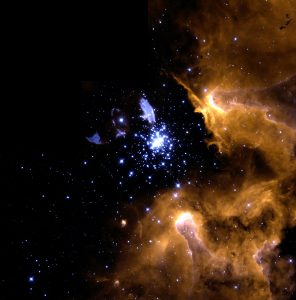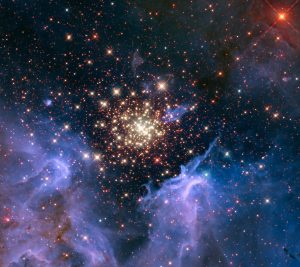NGC 3603
Scintillio di Stelle
Una giovane, scintillante collezione di stelle si presenta come uno spettacolo celeste di fuochi d’artificio. L’ammasso è circondato da nubi di gas e polveri interstellari, la materia prima per la formazione di nuove stelle. La nebulosa, che si trova a 20.000 anni luce di distanza nella costellazione della Carena, contiene un ammasso centrale di stelle ardenti e massicce, chiamato NGC 3603. Continua a leggere
Ritratto di Famiglia Stellare
Questa magnifica immagine del Very Large Telescope riprende la vasta nursery stellare NGC 3603, in cui nascono continuamente stelle. Immerso in questa scenica nebulosa si trova uno degli ammassi di giovani stelle massicce più luminosi e compatti della Via Lattea, un analogo “locale” di regioni di formazione stellare molto attive in altre galassie. Continua a leggere
Hubble immortala il ciclo di vita delle stelle

In questa affascinante immagine della gigantesca nebulosa NGC 3603, ripresa dal telescopio Hubble, vengono rappresentate le varie fasi del ciclo di vita stellare. Continua a leggere

